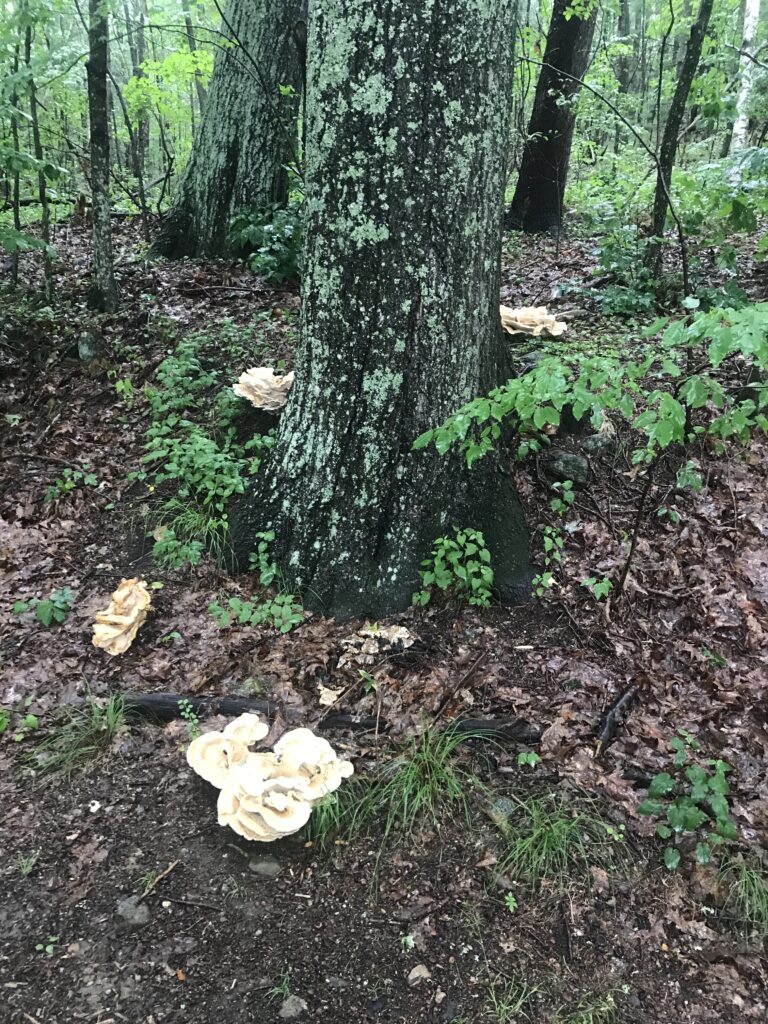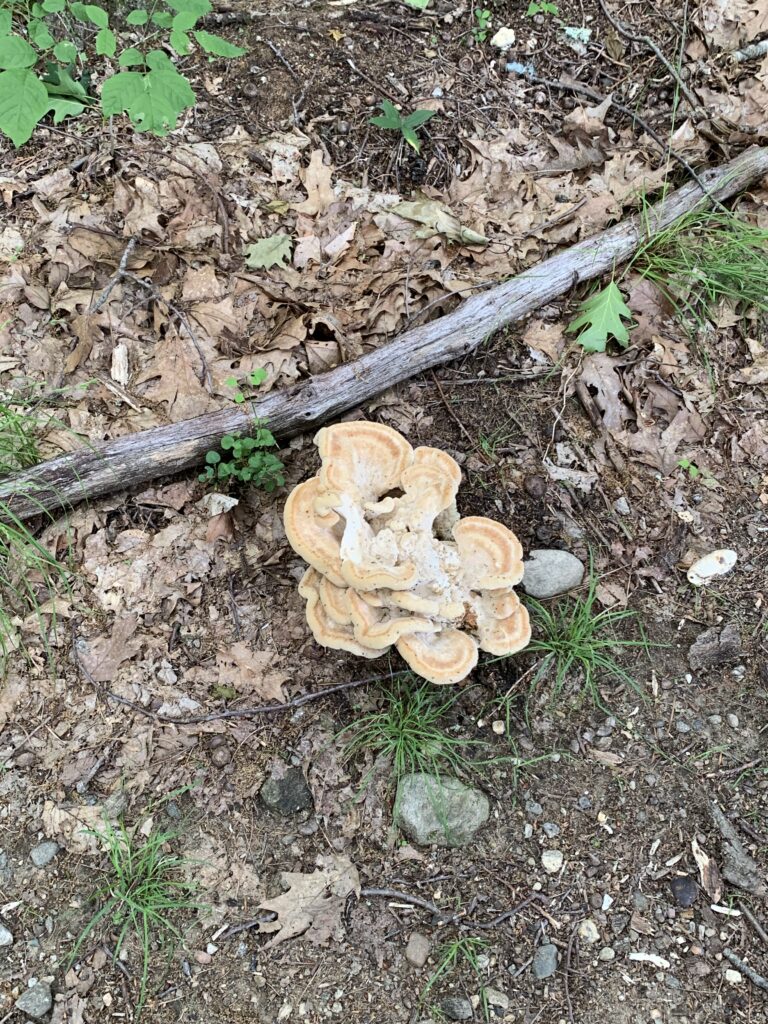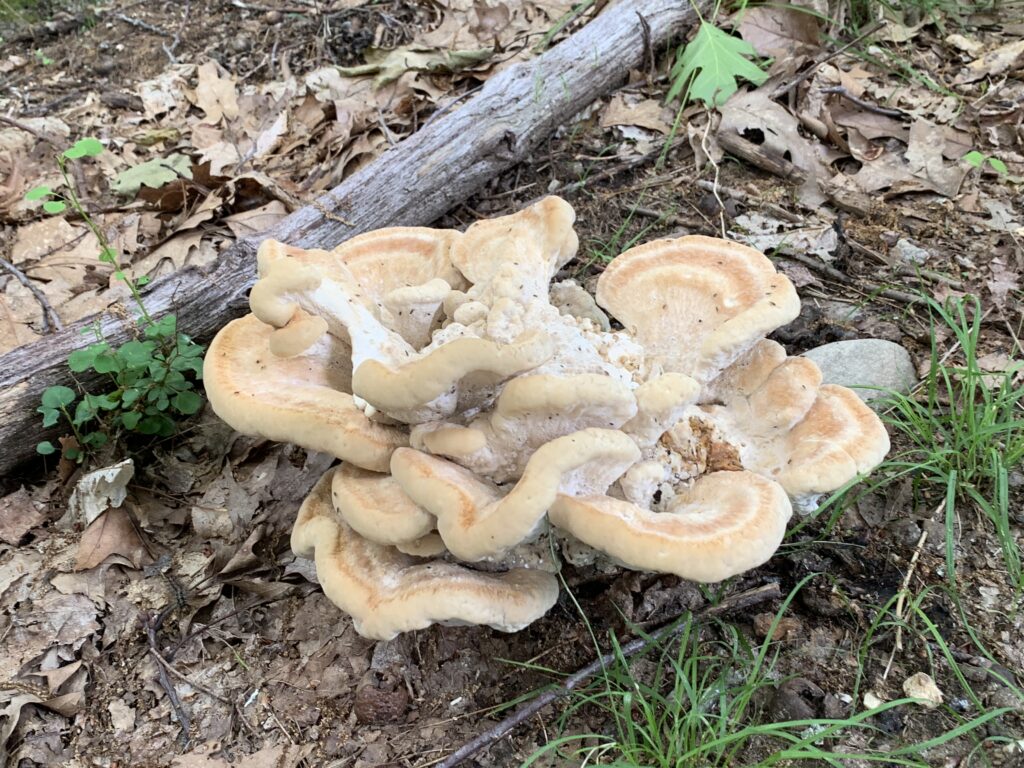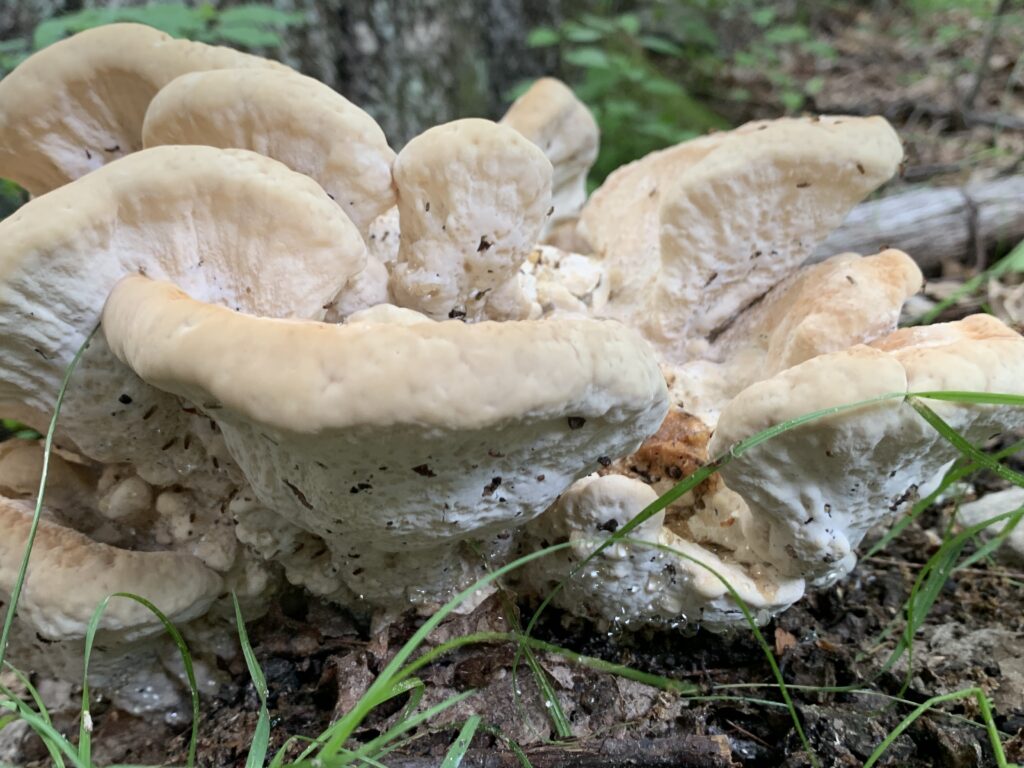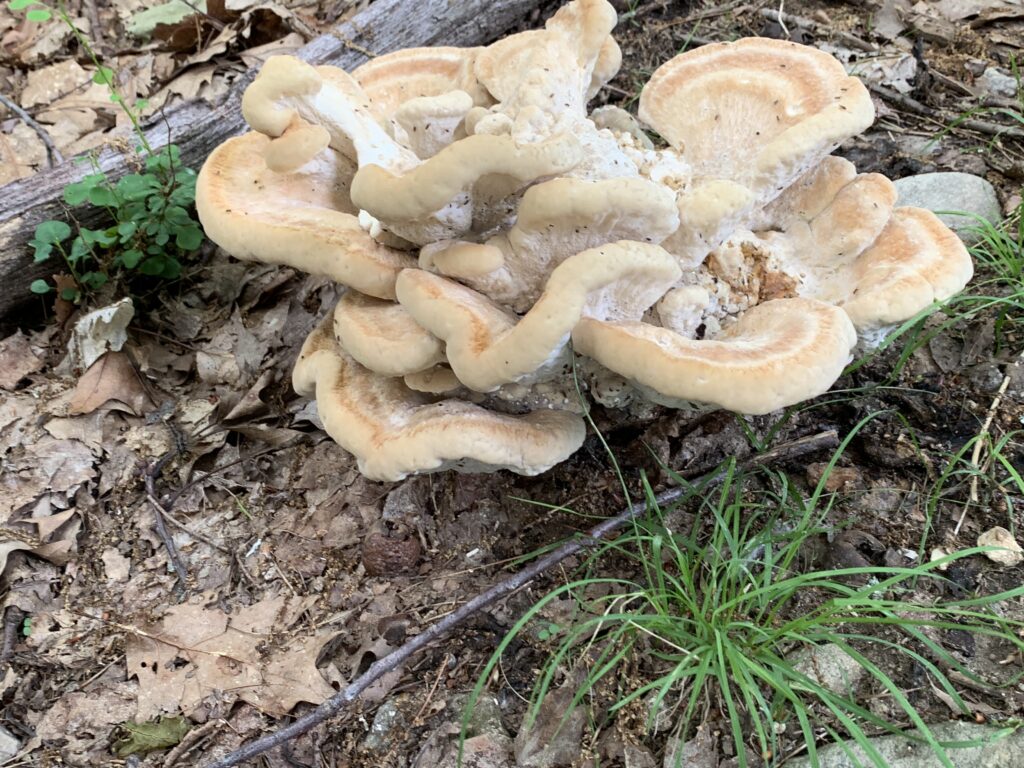| Ecology & Habitat | Parasitic, Growing in large rosette shapes at the base of the tree. Sometimes several will grow around the base of the tree at one time. It can be found growing on dead or dying hardwood trees, Predominantly on Oak. |
| Cap | White to cream cap, soft but with a velvety appearance, bruising slightly brown. |
| Pores | Pore surface white, bruising slightly brown. |
| Spores | White |

This fungus can reach some very impressive sizes. The specimens in most of these photos are on the smaller side. Its common name is Berkeley’s polypore, named after Miles Joseph Berkeley. This mushroom is characterized by its large, fleshy, and wide fan-shaped fruiting body with the fans arranged radially into a large blossom shape. The upper surface of the cap is smooth and velvety, with a light tan to beige color. The underside of the cap is covered with small, to medium sized white pores that release its white spores. The flesh of the mushroom is also white and firm, with a mild taste and odor. They are a parasitic species of hardwood trees, particularly oak. It grows at or near the base a hardwood trees, or stumps. The fungus itself will kill the tree, but such is life in the forest. The landscape is constantly changing. You will see these rural areas as well, in yards, parks, etc. Wherever trees are found. It will make it’s debut usually in late spring/early summer. Some say that the outer edges of cap are edible, but I have not tried it myself. They are similar to black staining polypore but the flesh from what I can see is thicker. The caps are a similar tan and off-white color, but slightly more vibrant than the black staining polypore.

